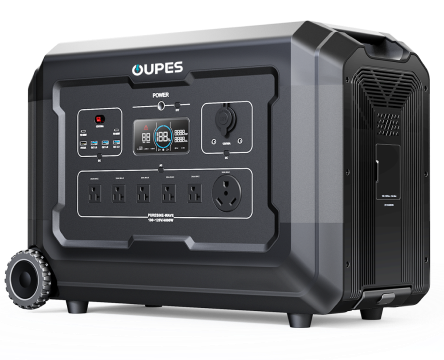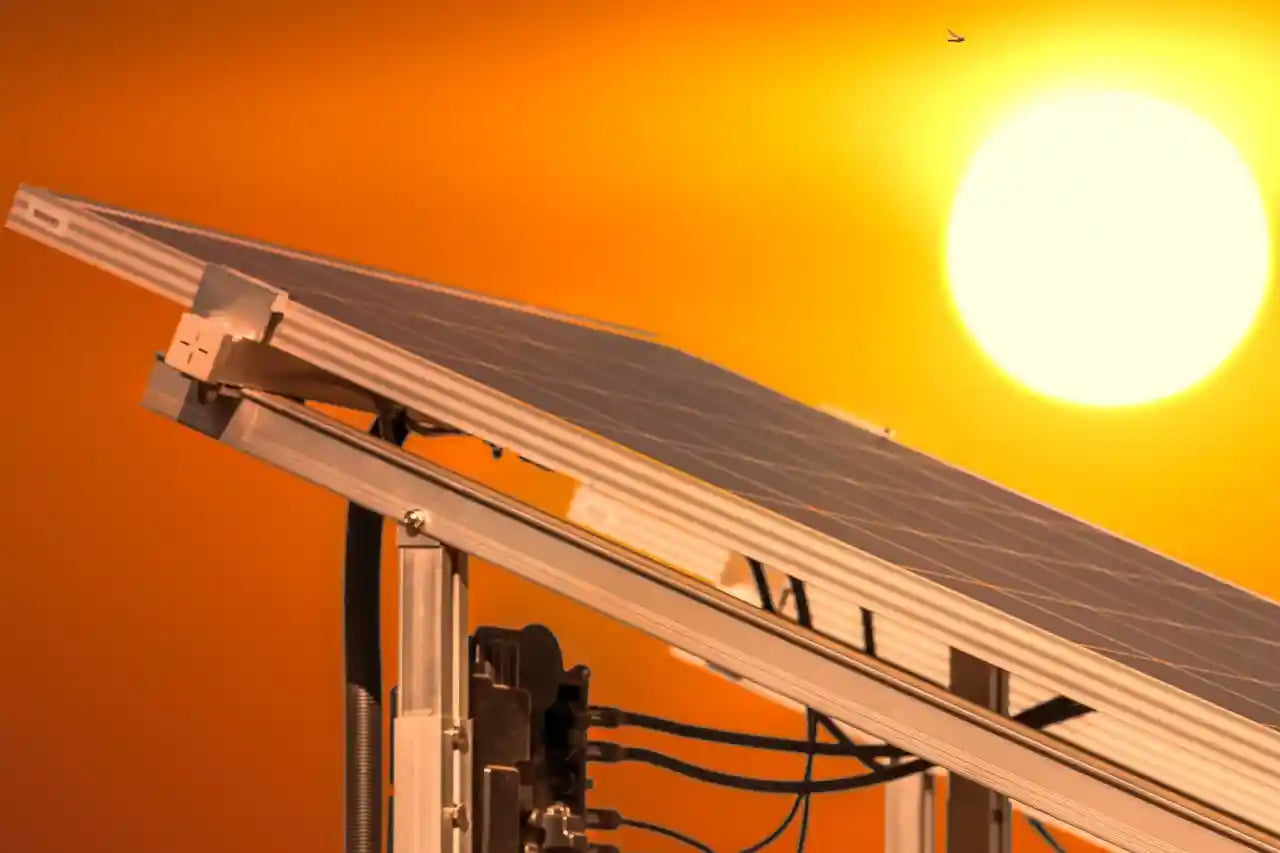When you are new to solar energy, there are a few things that you must know, and one of the most important things is the solar panel voltage. It may sound technical, but matching the correct voltage between your solar panels and generator is not as difficult as you might think, but it will make your solar system run efficiently and safely.
This article will help you understand how to prevent any voltage mismatch, how to select the correct voltage, and what factors you should consider when charging a battery or powering appliances using a solar generator.
What Does Solar Panel Voltage Mean?
 Imagine solar electricity as water flowing inside a pipe. The solar panel voltage is similar to the pressure of that water; it assists in driving the electricity to where it is required, such as your battery or generator. When the pressure is not enough, your system will charge slowly. When it is too high, it may overload your equipment.
Imagine solar electricity as water flowing inside a pipe. The solar panel voltage is similar to the pressure of that water; it assists in driving the electricity to where it is required, such as your battery or generator. When the pressure is not enough, your system will charge slowly. When it is too high, it may overload your equipment.
The majority of solar panels are available in 12V, 24V or 48V. And your generator or battery bank needs to “speak the same language” to work properly.
A quick example: If you're using a 12V solar generator from Oupes, it works best with a 12V or similar voltage panel.
What Voltage Do Solar Panels Generate?
Solar panels deliver various voltages based on their design, and they are not always what it is labeled. This is a simple breakdown:
|
Panel Type |
Label Voltage |
Real Working Voltage (Vmp) |
|
12V Panel |
12V |
17V–18V |
|
24V Panel |
24V |
34V–36V |
|
48V Panel |
48V |
60V–70V |
What voltage does a solar panel produce then? The normal 12V panel will generate around 17-18V with normal sun. That added voltage is not an accident - it is necessary to make the flow of current efficient through charge controllers and into batteries.
Tip:Be sure to read the Vmp (Voltage at Maximum Power) and Voc (Open Circuit Voltage) which is located at the rear of the panel. They should fit your system well, particularly when integrating it with a solar generator.
The International Energy Agency (IEA) reported that solar PV was the highlight of the fastest-growing electricity sources in the world in 2023, and the capacity is projected to reach 5,400 GW in 2030.
How Are Solar Panels Rated?
You may have seen solar panels that are rated as 100W, 200W or more. However, have you ever thought of how are solar panels rated?
They are tried in the best laboratory conditions: in the hot sun, no shade, comfortable weather. It is how the manufacturers determine the wattage, voltage and current.
Each panel has a label showing:
● Voc (Open Circuit Voltage): Max voltage when no load is connected
● Vmp (Voltage at Max Power): Real-world voltage when the panel is in use
● Wattage: The total power it can produce (Watts = Volts × Amps)
Keep an eye on Vmp — that's the number you match with your generator input.
How to Check Solar Panel Output
When checking the solar panel output, there are simple methods that you can use at home:
1. Read the label: The panel will list its Vmp and wattage.
2. Use a multimeter: Connect it to the panel in sunlight. It’ll show you the voltage and current.
3. Monitor with a solar generator: Many solar generators have displays or apps that show real-time charging data.
Tip: Check output during sunny noon hours for the most accurate numbers.
Matching Solar Panel Voltage with Your Generator
Now let’s put it all together. To safely pair your solar panel with a generator:
● Match the Vmp of the panel to the input voltage of your generator.
● A 12V generator pairs best with a 12V panel.
● A 24V panel can still be used if you have an MPPT charge controller (many Oupes models support this).
If you’re mixing panels in a series, the voltages add up — so be extra cautious not to exceed your generator’s input limit.
What Does PV Stand For?
You’ll see the term “PV” on most solar panels. So, what does PV stand for?
It means Photovoltaic— a fancy word for "turning sunlight into electricity." Each solar panel is a part of PV system comprising panels, batteries, controllers and occasionally inverters or generators.
So next time you read “PV panel” or “PV system,” you’ll know it’s just solar gear doing its thing.
The cost of solar photovoltaic (PV) electricity has dropped by 85% in the last decade./p>
What About High Voltage Solar Panels?
High voltage solar panels (like 72-cell or commercial panels) produce 60V or more. These are best for large homes or industrial setups. If you’re using a portable generator or a small off-grid system, they’re not necessary — and may even damage your equipment if the voltage is too high.
Stick with 12V or 24V panels unless your system is built for high voltage.
Solar Panel Power Output — Why It Matters
Solar panel power output isn’t just about the number printed on the box. It tells you how much energy you’ll get under perfect sunlight.
For example:
● A 100W panel at 18V produces around 5.5 amps.
● A 200W panel at 36V? That’s about 5.5 amps, too — but more voltage and more power overall.
Therefore, make sure to consider voltage and wattage whenever selecting your panel.
FAQs
How to tell if a solar panel is 12 or 24 volt?
Check the Vmp on the spec label. Around 18V means 12V panel, while 36V means 24V.
Can you charge a 12V battery with a 24V solar panel?
Yes, but only with a matching MPPT charge controller that will safely reduce the voltage.
Can I use 12V car batteries for my solar panel system?
Technically yes, however, they are not made to handle deep cycles. To get the best results, use solar-rated batteries.
What is a good voltage for solar panels?
Panels with 12V or 24V make a good compromise between compatibility and performance in most portable and residential systems.
Final Thoughts
The proper selection of solar panel voltage will save you time, money, and energy-related headaches. It’s not just about watts — it is about matching voltage with your generator, using quality charge controllers, and seeing how it works under load in the long run.
Oupes provides user-friendly solar generators with proper voltage guidelines, making your solar experience is easier and intelligent.
Stick with what fits your system, check your specs, and enjoy the sun-powered freedom that solar energy offers.

































Leave a comment
This site is protected by hCaptcha and the hCaptcha Privacy Policy and Terms of Service apply.